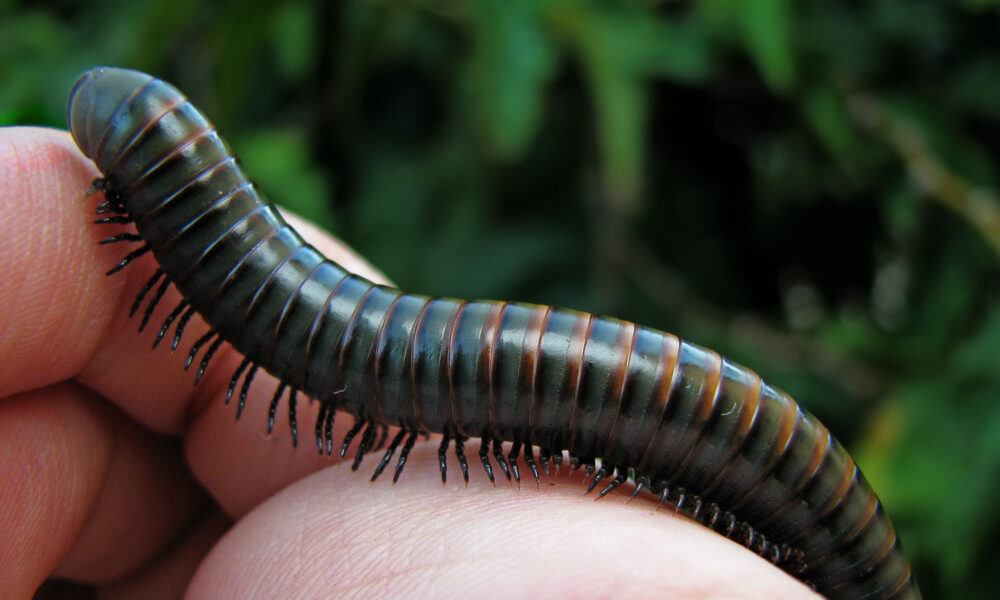It’s safe to say that most people are familiar with the creepy-crawly known as the millipede; from scuttling out of the dirt in your garden to gnawing on leaves in your attic, millipedes are a common sighting.
Many creatures, from spiders to snakes—and even some species of butterfly—evoke fear due to their numerous defence mechanisms, such as poison, claws, or fangs. Though these features are often perceived as a threat, they are rarely targeted at humans; they are typically used by animals to defend themselves or attack their prey.
Though millipedes are feared by many, like most other arthropod species, they are little more than many-legged composters. Millipedes are actually arthropods—invertebrates with jointed legs—not insects. Why, then, do we fear millipedes? And more broadly, why do we fear insects in general when most pose no danger?
Morgan Jackson is a postgraduate entomologist working in the field of taxonomy at McGill’s Macdonald Campus. Jackson says that most people don’t fear bacteria in the same way they do insects or arthropods, despite bacteria being arguably more dangerous. Insects and species that resemble them are a visible unknown in our own space, and they present themselves as a surprise.
“The way that [their presence] is violating our space, the way that [it] is violating our bodies, [is] in a way that very few other instances of wildlife do,” Jackson said in an interview with The McGill Tribune.
Millipedes provide us with a fascinating look into the world of entomology—the study of insects—and are a prime example of the potential that arthropods have to captivate curious individuals. Even though they may not technically be insects, their study is often lumped in with entomology.
“All the terrestrial arthropods people stick together,” Jackson said. “Even the arachnologists go to the entomology conferences.”
Millipedes belong to the class Diplopoda and are more closely related to crabs and shrimp than to insects. They vary from their close relatives, the centipedes, because their legs usually attach to their undersides, whereas centipedes’ legs splay out from their sides. They also differ in that they have two sets of legs per body segment, whereas centipedes only have one.
The many-legged critters are generally harmless: They do not have pincers or stingers, and they pose no threat to building integrity. Given that they rely on plant matter as their main source of nutrients, millipedes did not evolve any adaptations for hunting prey. Rather, they have a number of defence mechanisms to keep predators from eating them. Some species roll into tight coils to better defend themselves with their hard exoskeletons, while other species have pointy protrusions that would make them quite an unpleasant meal—and then there are millipedes that secrete the poisonous gas hydrogen cyanide.
The word millipede means “thousand feet”—however, no previously known millipede species was found to have that many. The previous record holder had fewer than 800. Recently, Bruno Buzatto, an entomologist and arachnologist at Macquarie University, discovered a new millipede that had 1,306 legs—the first to exceed the thousand-leg mark. Found in Australia, this new species of millipede, named E. Persephone, lives tens to hundreds of meters underground.
With this single discovery, two assumptions were challenged: One, that most millipedes live in moist environments, and two, that no millipede species has over 1000 legs.
Even though it may not seem groundbreaking, there is a certain satisfaction to making discoveries and learning what was before unknown, or thought to be impossible—a satisfaction that can’t be shared with those who let their fear conquer their curiosity.
As Jackson puts it, “Just the fact that it is so long, and actually hits that thousand-foot name mark again—it’s just all cool, it’s just really, really neat.”








